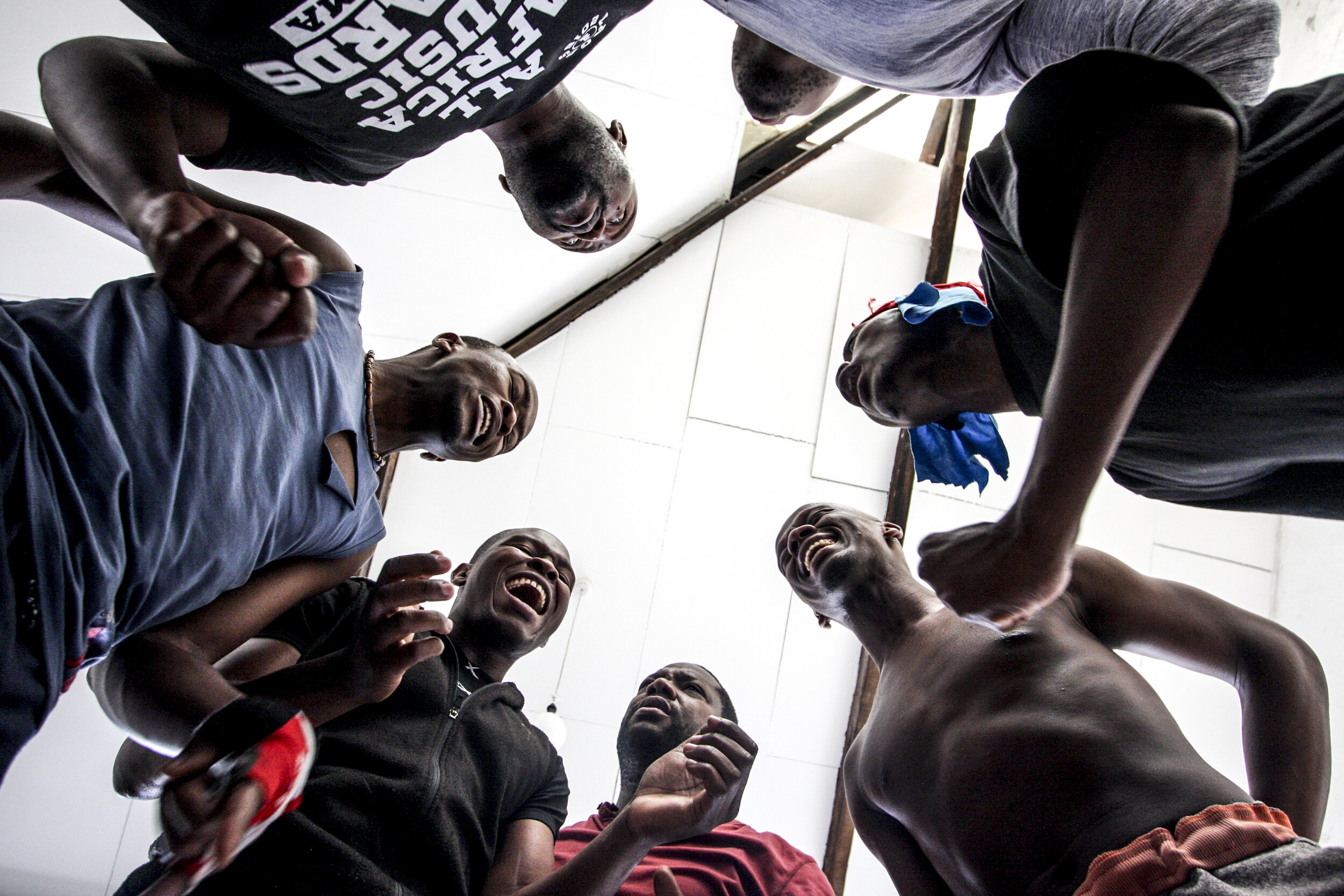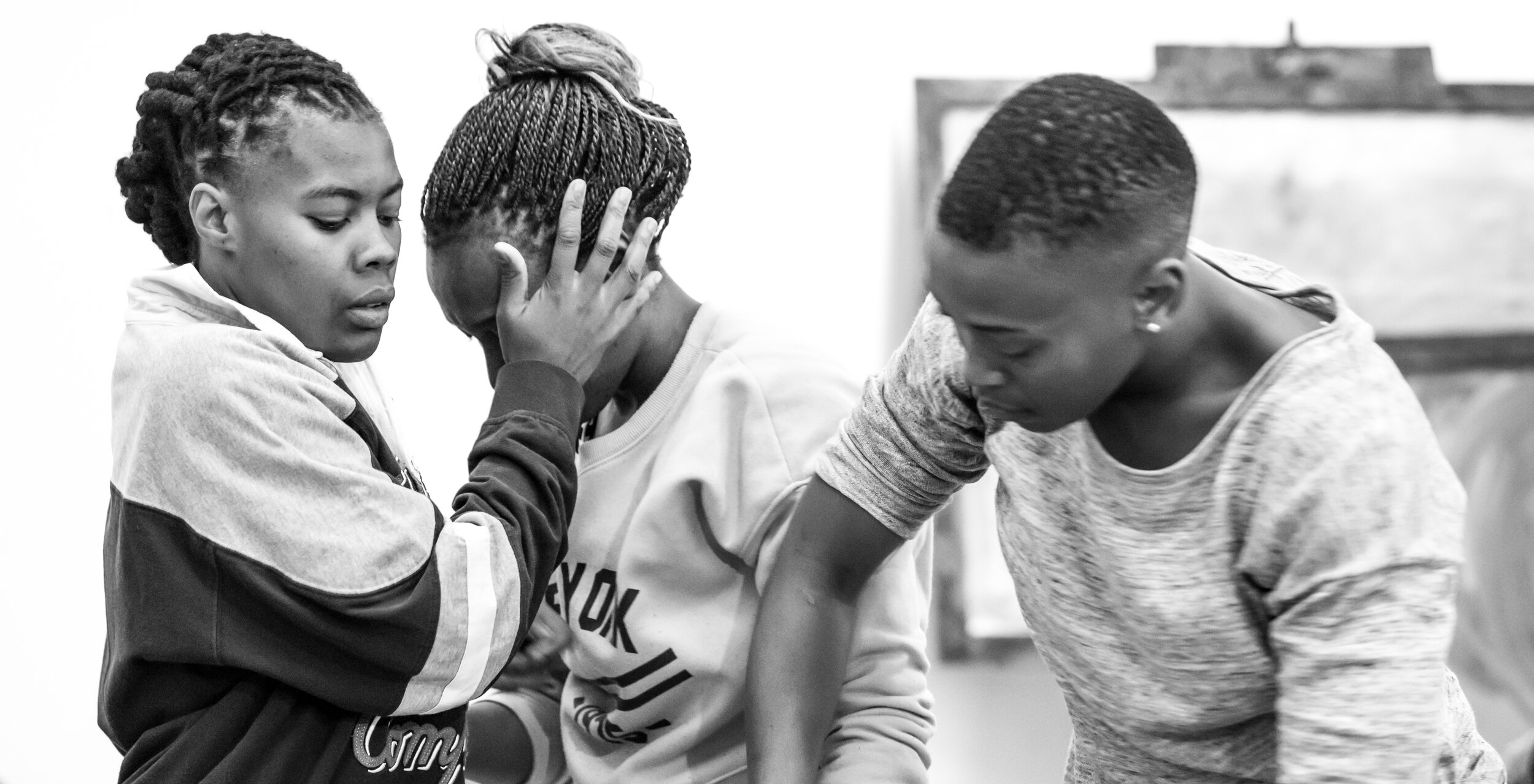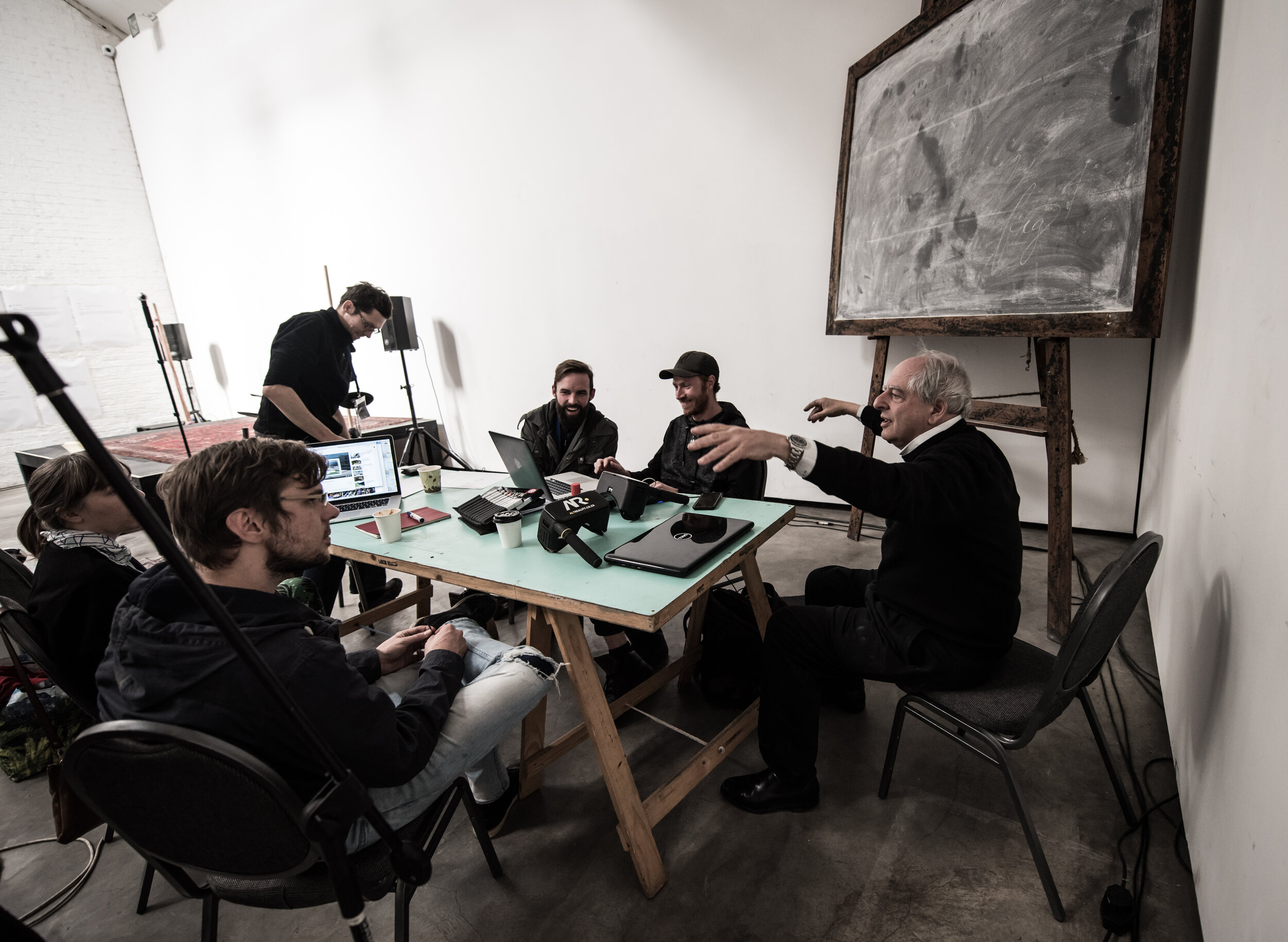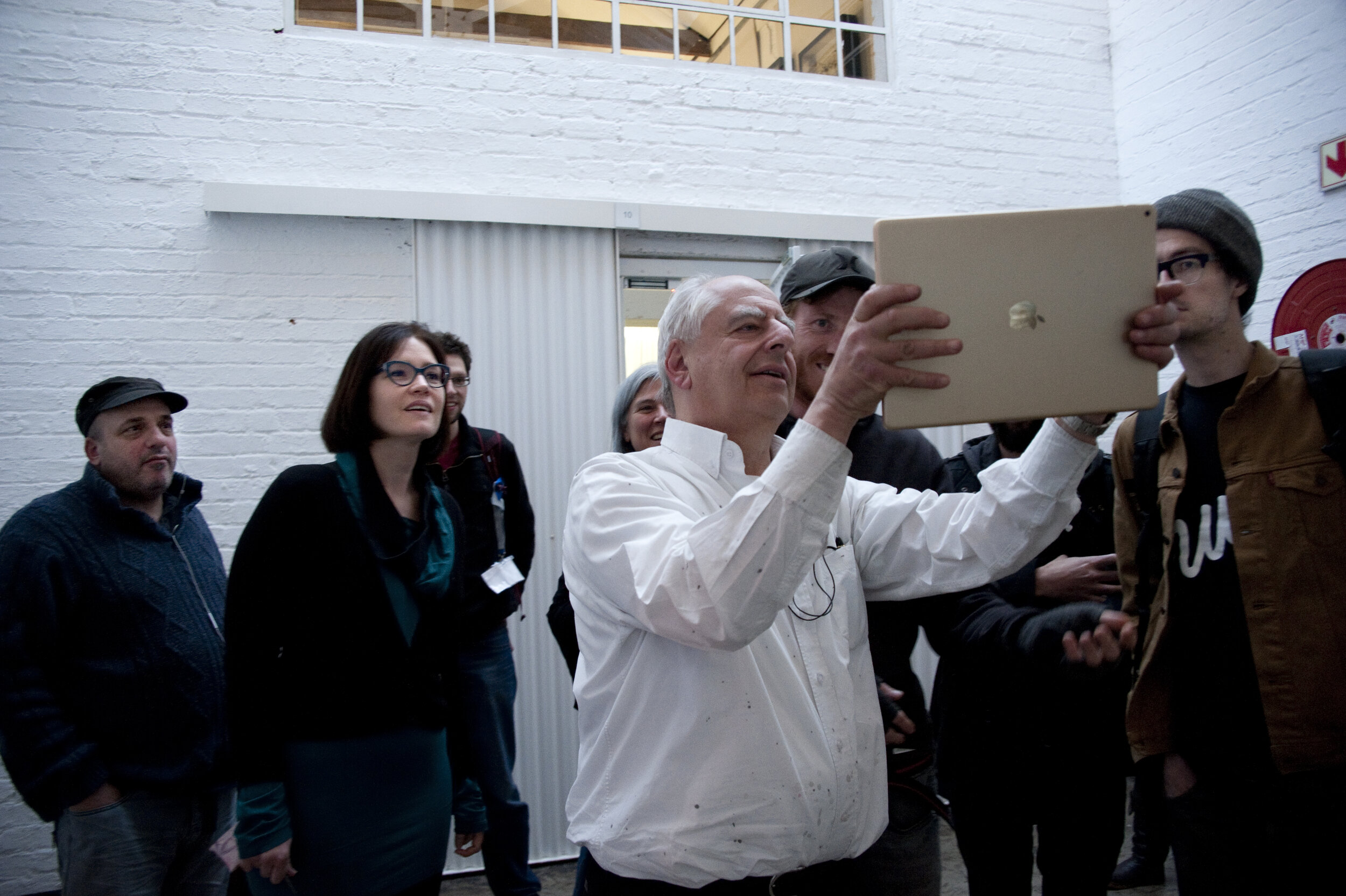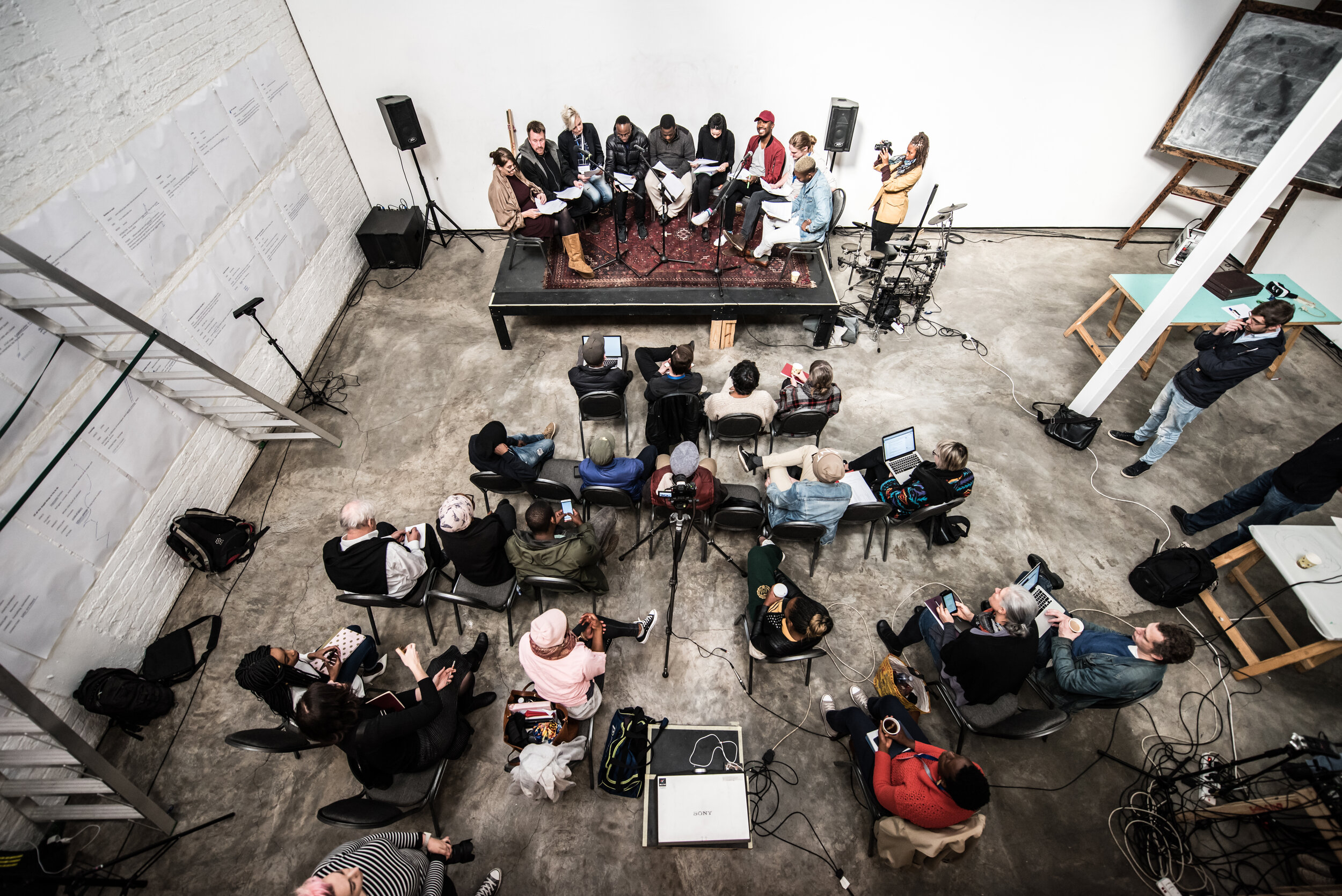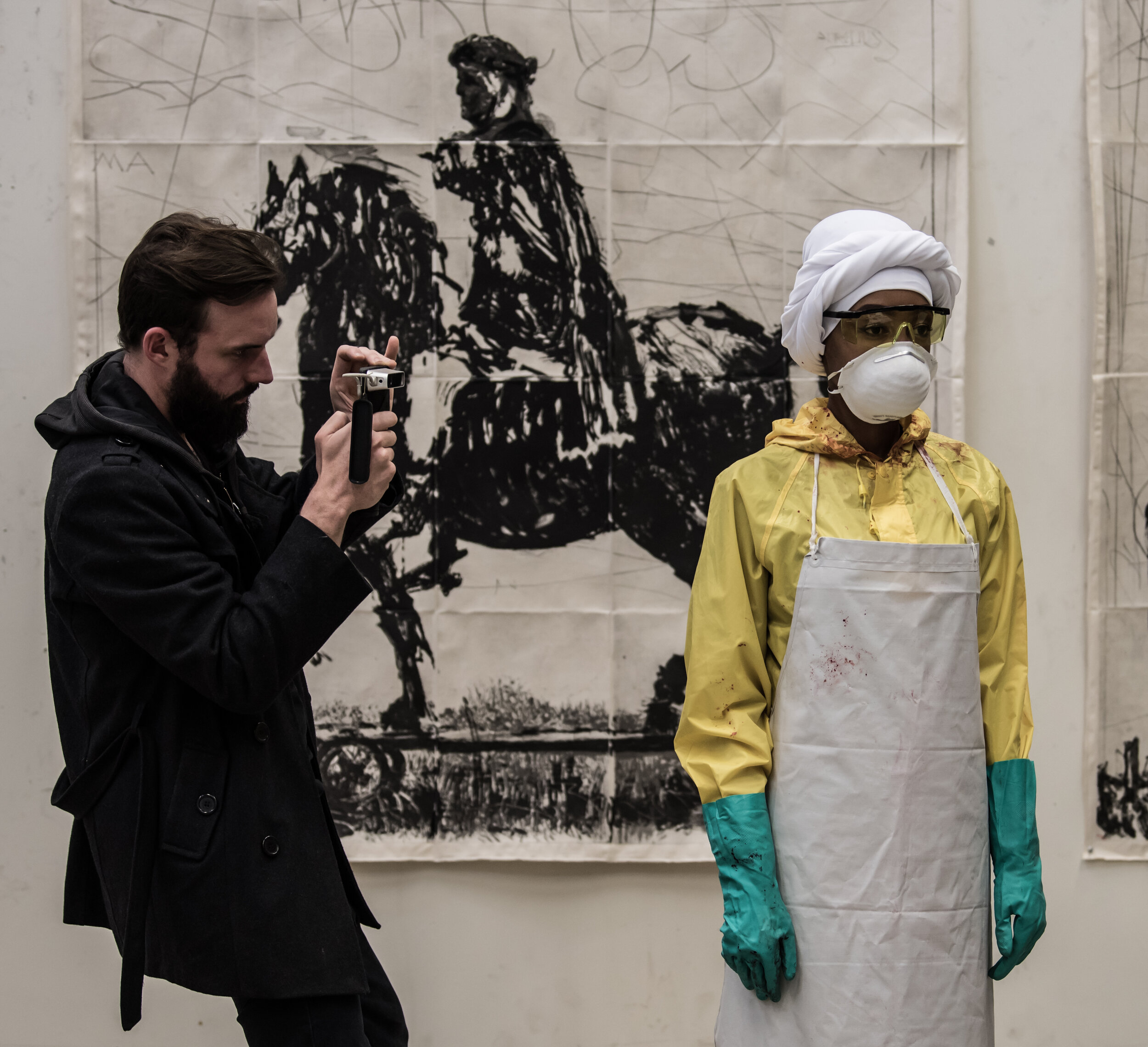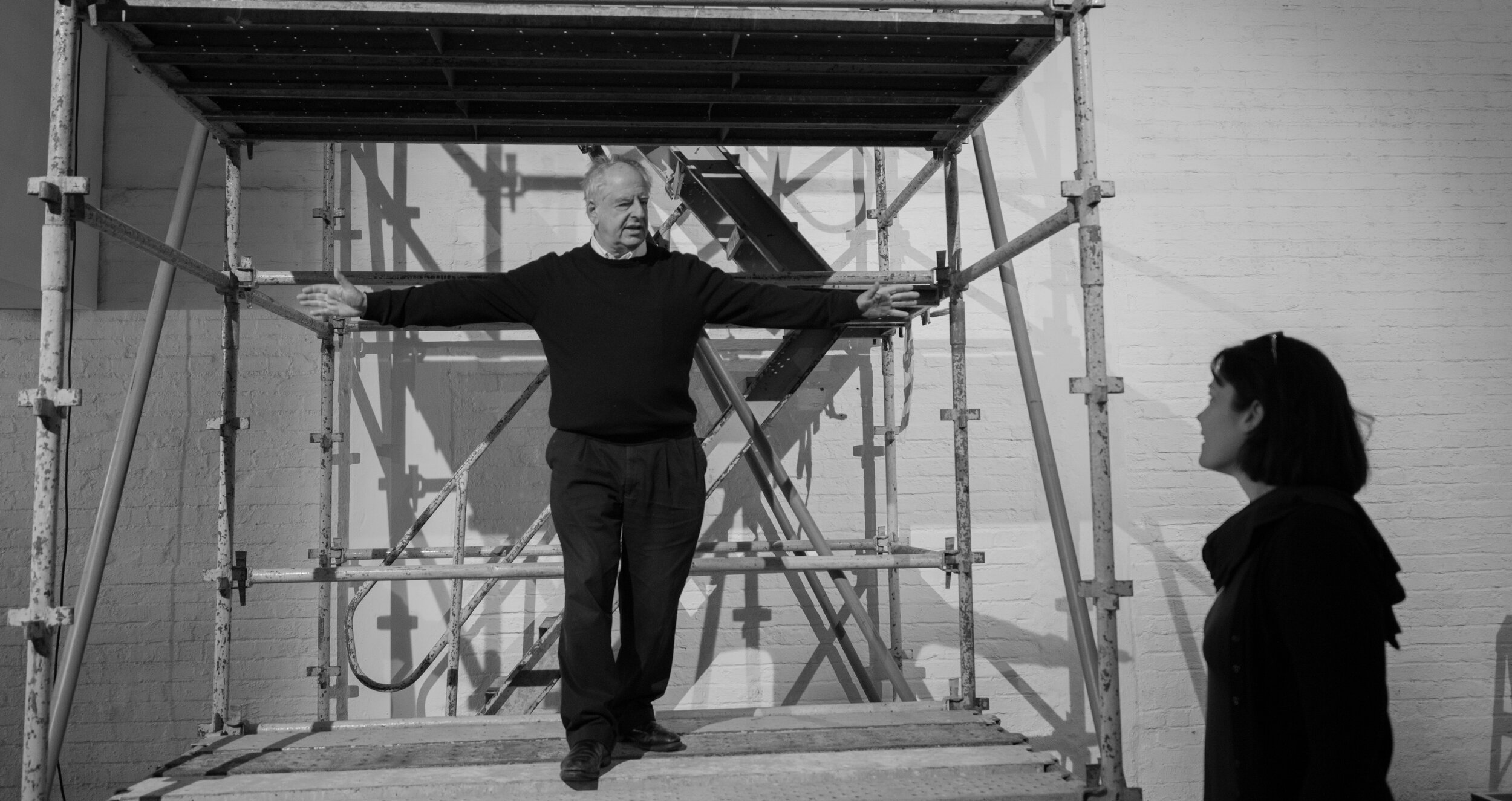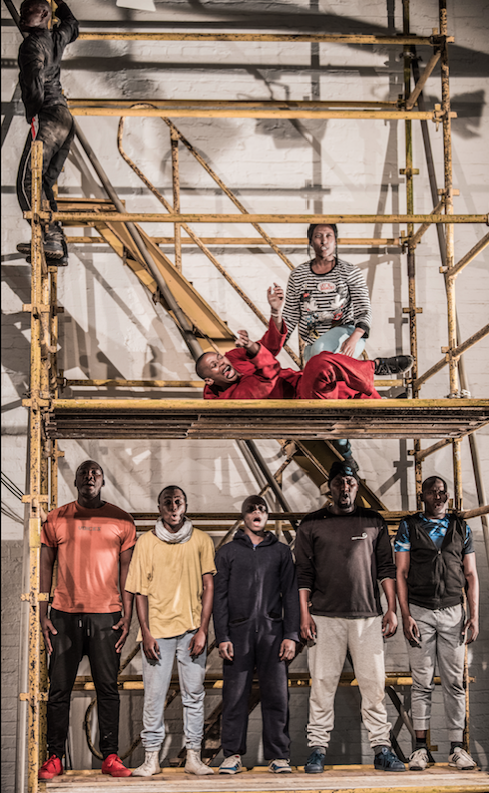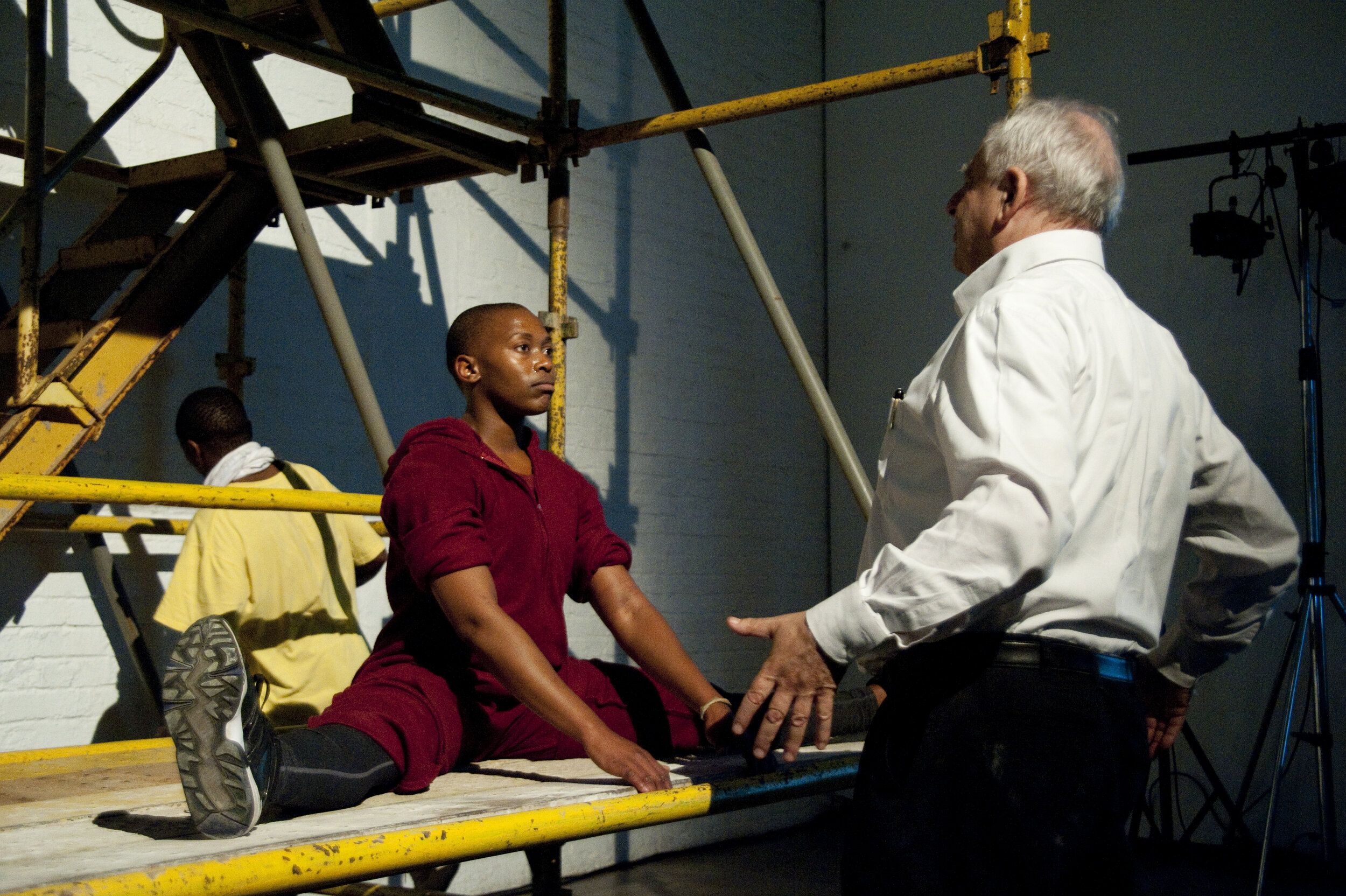Founded by William Kentridge in 2016, the Centre for the Less Good Idea aims to find “the less good idea” by creating and supporting experimental, collaborative, and cross disciplinary arts projects that pursue process and secondary thinking. The Centre’s focus is to create two six-month-long seasons a year.
Core curators from South Africa and from varying artistic disciplines are identified and invited to create the season; the curators then engage practitioners with whom they would like to collaborate, and with that the seasons grow.
Season 2 took place in October of 2017. The invited curators were performer, teacher, director and composer Nhlanhla Mahlangu; interactive digital-media artist, professor and curator Tegan Bristow; and visual artist and cultural organiser Jamal Nxedlana.
Season 2 brought together more than 30 practitioners (actors, dancers, poets, writers, composers, musicians, visual artists, film makers, architects and creative technologists) under the guidance of curators, founding animateur Bronwyn Lace, and founder William Kentridge.
Each new workshop session at the Centre for the Less Good Idea begins with an informal, yet vital set of introductions. More often than not, these introductions take place in a seated gathering in one of the various spaces at The Centre.
The initial function of these introductions is, naturally, to familiarise the Season’s curators, collaborators, and production members with one another. It is in these brief, keen moments where the initial sparks of interest and curiosity take place. Dancers, visual artists, musicians and more are communicating their seemingly disparate interests and intentions, and unwittingly finding resonance with fellow collaborators. It is also the only time that formal introductions take place during the workshop, leaving the creation of new work to serve as the primary driver of familiarisation throughout the week.
Another function of the workshop introductions is to communicate the ethos of The Centre for the Less Good Idea – to plant the seed of experimentation, provocation, and free-spirited improvisation, and to encourage the pursuit of the secondary idea.
There is, without fail, a nervous excitement that characterises these introductions, and it is during these early moments that the first tentative steps towards more collaborative efforts are taken. Like many of its smaller, seemingly imperceptible moments, it is here that the spirit of The Centre for the Less Good Idea can be so strongly felt.
Photographer | Zivanai Matangi
Morning warm-ups play an integral role during The Centre’s workshops. Led by different collaborators each Season and with no set form, these morning sessions range from physical and vocal warm-ups to free-association and movement exercises.
Although optional, these sessions come to serve as a useful daily ritual for dancers, visual artists, writers, and musicians alike. Beyond simply preparing the body and mind for the day’s rehearsals and explorations, these warm-ups have the dual effect of familiarising the Season’s collaborators with one another and priming the space for greater forms of collaboration and improvisation.
Often, it is The Centre’s daily warm-up sessions that see the incidental meeting and subsequent collaboration between artists and performers, as new ways of exploring one’s practice emerge in the presence of others.
Finally, while warm-ups most-often begin in The Centre’s main space, they frequently build up and spill out into the atrium and outdoor spaces, consequently activating and engaging the various spaces of The Centre and the Arts on Main building.
Photographer | Stella Olivier
Founder William Kentridge and founding animateur Bronwyn Lace had an interest in bringing transdisciplinary tactics to every season at the Centre. Through merging narrative-driven art and performance with new and experimental technologies, the Centre presents a series of works that enter the mind of the artist, turn installation works into moveable, interactive worlds, traverse time and reality, and highlight the tensions and navigations of the everyday. Rather than attempting to enhance performance and artmaking through technology, The Centre sees art and performance being the conceptual drivers of the technology itself, harnessing the framework, the possibilities, and the limitations of experimental technology in order to play with form, structure, and meaning in new and engaging ways.
For Season 2, Lace and Kentridge invited visual artists to develop sculptural drawings using Tiltbrush, a room-scale 3D-painting virtual reality application developed and published by Google.
Creative technologists, Rick Treweek and Gareth Steele from AltReality and Divesh Naidoo and James Gaydon of Dondoo Studios were invited to work closely with some of South Africa's most celebrated visual artists to create the Invisible Exhibition, which was curated by Lace.
These creative technologist teams brought some of their hard and software to the workshops and play sessions, and as a result, Kentridge set out to create a new short-form 360° immersive charcoal film performance which would be experienced in Virtual Reality headsets. For Season 2, Kentridge produced the film Love Songs from the Last Century. For the set, Kentridge produced sweeping charcoal landscapes, wrapped them into barrel structures, and began adding elements from the top.
Janus Fouche, a regular collaborator in Kentridge’s digital work and coding, edited the footage while another frequent collaborator of Kentridge’s, performance artist Joanna Dudley, joined Kentridge in the film.
CONCEPT & CREATION | William Kentridge
COLLABORATOR | Joanna Dudley
EDITOR | Janus Fouché
TECHNOLOGISTS | AltReality &Clearwater South Africa
CURATOR | Bronwyn Lace
PHOTOGRAPHER | Stella Olivier
Performer, teacher, director, composer, and Season 2 core-curator Nhlanhla Mahlangu invited long-time collaborator Gerard Bester as an associate director into a process of imagining a new performance piece with vocalists Xolisile Bongwana, Thabang Mkhwanazi, Simphiwe Bonongo, Sbusiso Shozi, Penwell Langa, Gregory K. Mabusela and contemporary dancers Lulu Mlangeni, Teresa Phuti Mojela, and Thandazile Sonia Radebe.
Photographers | Zivanai Matangi & Stella Olivier
Interactive digital-media artist, professor, and Season 2 core-curator Tegan Bristow invited composer Cameron Louis Harris, writer and theatre maker Mwenya Kabwe, and creative technologists Rick Treweek and Gareth Steele into the season and the incubation of multiple now possibilities for work – from virtual and augmented reality exhibitions and 360° virtual performance films, to installations and staged performances.
Photographers | Stella Olivier & Adine Sagalyn
Visual artist, cultural organiser, and Season 2 core-curator Jamal Nxedlana invited his existing collaborative network CUSS Group into the process and challenge of creating an immersive film experience. The team included Ravi Govendor, Lex Trickett, Zamani Xolo, Allison Swank, Mandisi Msingaphantsi, Kutlwano Makgalemele Kutlwano, Liezl Durand, Orli Oh Meiri, Marchay Linderoth, Mimi Duma, and Marcia Elizabeth.
Here we see a first script reading by actors in the film which included Lisle Collins, Zenzelisphesihle Sparky Xulu, Langa Mavuso, Jordan Major, Gerard Bester, Patricia Boyer, Hayleigh Evans, Ayanda Nhlapo, Nhlanhla Mahlangu, Sir-Cornwell Ray Zulu, Desire Marea, Thulani Zwane, and Sparks Napoli.
Photographer | Stella Olivier
While a collaborative and free-spirited approach to the creation of experimental work is prized at The Centre for the Less Good Idea, the simple use of a prompt is central to the generation of new ideas. In the case of Season 2, this took the shape of a scaffold set up as a stage for the curators and artists to respond to.
At The Centre, collaborative art and performance are the primary drivers of new work, and so a single item, setting, or exercise will prompt myriad interpretations and responses. The original prompt can inspire and shape an artist’s process and body of work, or it can become barely recognisable in a performance’s final iteration, as the processes of play and collaboration, and the pursuit of the secondary idea give rise to new, experimental modes of engagement. Ultimately, the prompt serves to provide a starting point for creativity and is there to be harnessed, challenged, and interpreted as widely as possible.
Here we see founding animateur Bronwyn Lace, and founder William Kentridge developing the shape and form that the scaffold would take. UrbanWorks Architecture and Urbanism, headed up by Thireshen Govender and project managed by Izak Potgieter, eventually designed the scaffold stage.
Costume and set designer Noluthando Lobese Moropa was then invited by The Centre team to develop the visual solutions and scenography for much of the work made within the season.
Photographers | Stella Olivier & Adine Sagalyn
PRODUCTION FOR THE CENTRE
ANIMATEUR | Bronwyn Lace
PROJECT MANAGER | Noah Cohen
STAGE MANAGER | Lungelo Winnet Shange
FRONT OF HOUSE PRODUCTION & CREW | POPArt Productions: Hayleigh Evans & Emil Lars
LIGHTING DESIGNERS | Mandla Mtshali & Matthews Phala
LIGHTING EQUIPMENT | Gearhouse Splitbeam (Pty) Ltd
SOUND ENGINEERS | Soulfire Studios: Gavan Eckhart, Ruby Friedman & Jacques Sibanda
PROP, SET & COSTUME DESIGNER | Bake und Backen: Noluthando Lobese
STAGE DESIGNERS | UrbanWorks Architecture & Urbanism: Thireshen Govender & Izak Potgieter
CONSTRUCTION | Estee Automation
FILM EDITOR | Noah Cohen
CINEMATOGRAPHER | Kutlwano Makgalemele
ASSISTANT CINEMATOGRAPHER | Chris Soal




